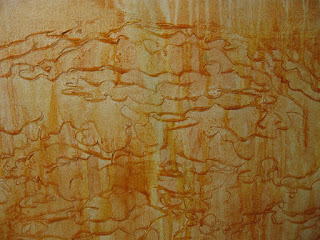
Childhood Memories of the Creek Bed
Difficult Run is a stream bed that runs through my life like a thread through a quilt. As a child I played in it with my older brother Nick and as an adult I ramble along its banks in awe of its natural design. I have written a new artist statement. This statement is more in harmony with my work and my life.

I feel I am getting closer and closer to the core of my work and where it comes from. And this past week has been spent researching and filling up the image bank for more images to come this spring.
This past week, I had the privelege of meeting the education specialist at Meadow Lark Gardens. I was on a quest for information about my "Earth Objects". My new friend is a scienctist who happens to be as passionate about these tiny objects as am I. She will be helping me identify the genus and species of the plants, pods and seeds that I paint.
My work is focused on native plants in the Difficult Run Watershed of Northern Virginia http://en.wikipedia.org/wiki/Difficult_Run. My new friend is a kindred spirit. She seeks to preserve the natural forests of the areas in the Gardens and I seek to immortalize them.















+of+IMG_0305.jpg)
+of+IMG_0312.jpg)


+of+IMG_0321.jpg)

+of+IMG_0323.jpg)














